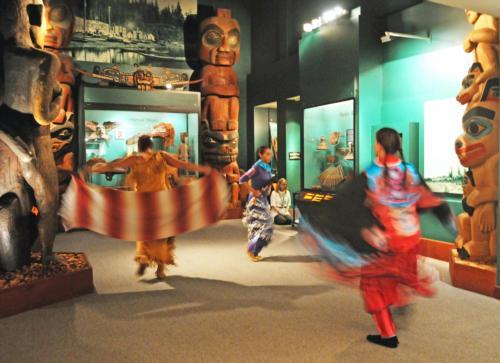
News
Cambridge Residents Slam Council Proposal to Delay Bike Lane Construction

News
‘Gender-Affirming Slay Fest’: Harvard College QSA Hosts Annual Queer Prom

News
‘Not Being Nerds’: Harvard Students Dance to Tinashe at Yardfest

News
Wrongful Death Trial Against CAMHS Employee Over 2015 Student Suicide To Begin Tuesday

News
Cornel West, Harvard Affiliates Call for University to Divest from ‘Israeli Apartheid’ at Rally
Peabody Museum Hosts Harvard Relics

At Monday’s opening of the “Digging Veritas” archeological exhibit, shards of 400-year-old wine jugs and shattered tobacco pipes showed that current undergraduates might have more in common with Harvard’s earliest alumni than they think.
The exhibit, hosted by the Peabody Museum, presents the cumulative work of three different anthropology classes in uncovering the history hidden beneath Harvard’s soil.
Monday’s reception offered student curators and faculty advisors a chance to share the fruits of their three-year labor and thank various Harvard sponsors.
Nathaniel H. Amdur-Clark ’09, a student curator, called Digging Veritas “the beginning of a lot of opportunities for students.”
The digs began in 2005 with the help of faculty in the anthropology department and the Harvard University Native American Program to commemorate the 300th anniversary of the Indian College, an oft-neglected component of Harvard’s earliest campus.
The college, which was located near where Matthews Hall now stands, was intended to encourage Native youth in the pursuit of “knowledge and godliness,” as Harvard’s first charter instructed.
The display’s artifacts were grouped thematically: “Literacy and the Indian College” recalled that the Indian College also housed the continent’s first printing press.
The metal print-type pieces were later matched by researchers to the Eliot Bible, an Algonquian-language text and the first Bible printed on North American soil. The press remained as the building’s sole occupant after the college closed in 1771.
In “Social Status: Divided We Eat,” fragments of forks and other food-related items evidenced a time when Harvard life was divided sharply by socio-economic class. As a rarity in 17th century America, the pronged utensil was used to convey family wealth and extravagance.
Other items showed the abandoned Harvard custom wherein younger students served upperclassmen their meals on a twice-daily basis.
The exhibit’s final theme, “Rule (Breaking) and Religion,” established unapproved behavior as a long-standing temptation for Harvard undergraduates. Gold buttons and pewter jewelry, dug from the dirt between Matthews and Grays, showed that Harvard students were more than willing to break the College’s Puritan “modesty” laws for the sake of good fashion.
Alcohol and tobacco were also widely consumed by early Harvardians, despite prohibition from the Puritan Church. The large number of wine-bottle and pipe fragments found between the Indian College building and the main residence suggested the presence of clandestine revellers.
Danielle L. Charlap ’09, another student curator, said that the concentration of these fragments were more typical of a tavern than a domicile.
Asked about the significance of the exhibit for the community, Charlap said, “It’s a really unique opportunity to share what we’ve learned with the public.”
Want to keep up with breaking news? Subscribe to our email newsletter.
